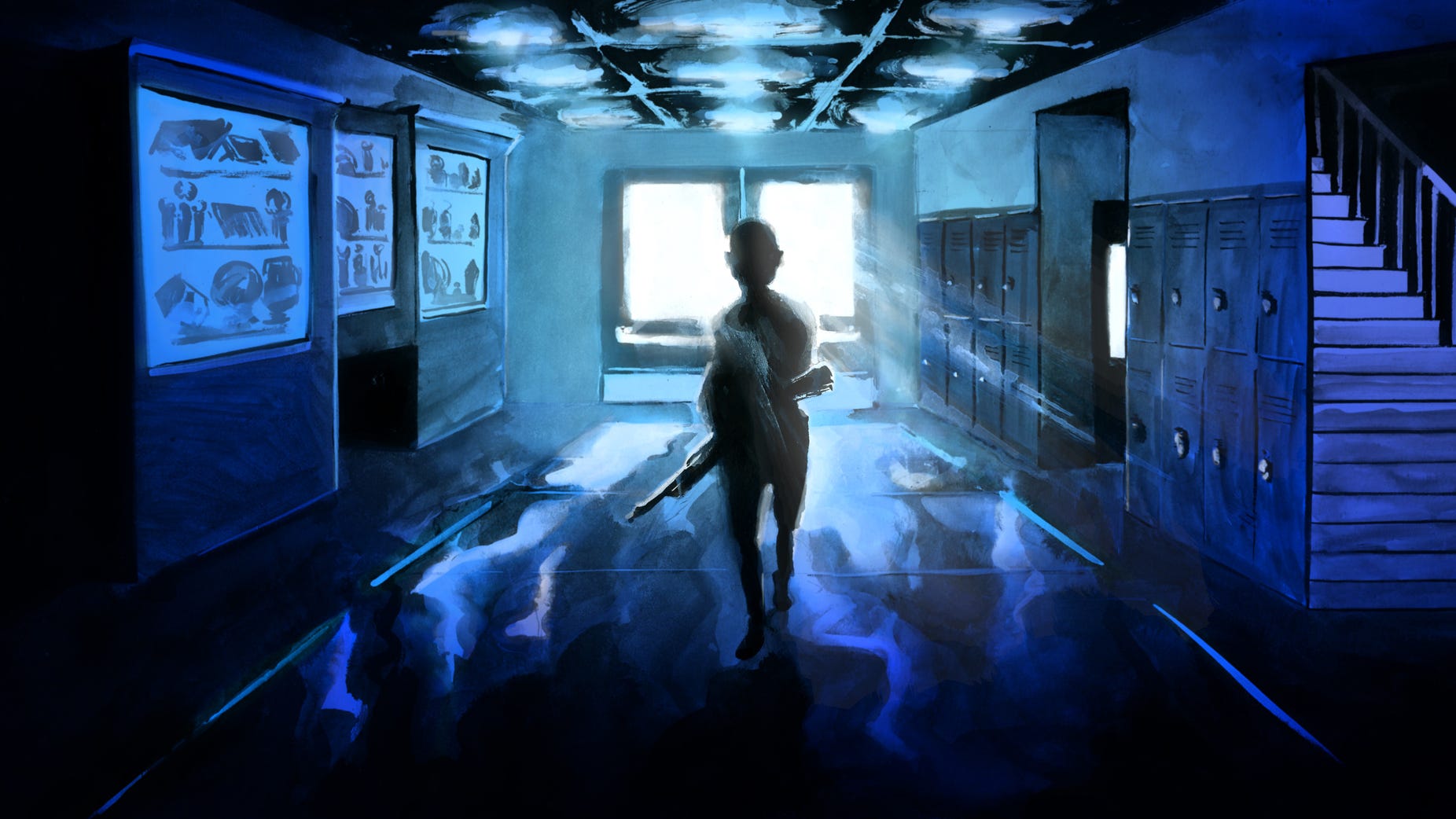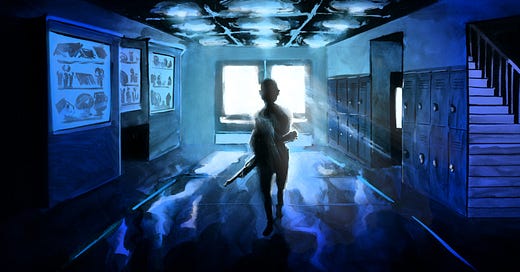Before Parkland, Santa Fe and Columbine...There Was Concord High
In 1985, a 16-year-old dropout showed up to school with a shotgun. Everyone said it was just a fluke.

Illustration by Matt Huynh
On a chilly Tuesday morning, late in the fall of 1985, a student told his teacher he saw a kid walk by the classroom with a gun. English teacher Merle Drown, on hall duty at the time, checked the hallways and boys bathroom. Seeing nothing, he assumed the student had been wrong, that what they’d seen had been something as ordinary as a janitor with a broom. Then Drown heard muffled yelling in the stairwell, and an announcement came over the loudspeakers: “We are holding bells. Do not release your students.” It was 8:35 a.m. and classes had just begun.
Drown, who was on the third floor, looked down the stairwell. Armed police officers had taken positions below him. Maybe it wasn’t the janitor carrying a broom after all, he thought.
“Put the gun down!” shouted the police at someone Drown could not see. “Put the gun down!” The piercing repetition bore up the stairwell.
With master key in hand, Drown instinctively began locking all classroom doors. Within minutes, th…
Keep reading with a 7-day free trial
Subscribe to Narratively to keep reading this post and get 7 days of free access to the full post archives.



